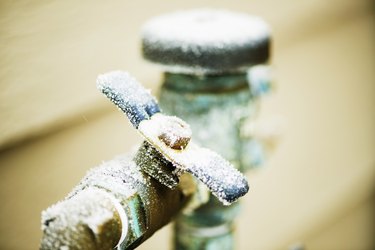Have you been in search of know-how on How to prepare your home plumbing for winter weather?

Winter can ruin your plumbing, particularly by freezing pipes. Here's just how to stop it from occurring and what to do if it does.
Introduction
As temperatures decline, the threat of icy pipes increases, potentially resulting in costly repair services and water damages. Comprehending how to avoid frozen pipelines is important for house owners in chilly climates.
Comprehending Icy Pipes
What creates pipes to ice up?
Pipes freeze when revealed to temperatures listed below 32 ° F (0 ° C) for prolonged durations. As water inside the pipes freezes, it expands, taxing the pipeline walls and potentially triggering them to burst.
Dangers and damages
Icy pipes can cause supply of water disruptions, home damages, and costly repair work. Burst pipes can flood homes and create comprehensive structural damage.
Indications of Frozen Water Lines
Determining frozen pipes early can avoid them from rupturing.
Exactly how to determine icy pipelines
Seek lowered water circulation from taps, unusual smells or sounds from pipes, and visible frost on exposed pipelines.
Avoidance Tips
Shielding at risk pipelines
Wrap pipes in insulation sleeves or make use of warm tape to shield them from freezing temperature levels. Focus on pipes in unheated or external areas of the home.
Heating strategies
Maintain indoor areas sufficiently heated, specifically areas with pipes. Open up cabinet doors to enable warm air to flow around pipes under sinks.
Safeguarding Exterior Plumbing
Yard hoses and exterior faucets
Separate and drain yard hoses before winter. Set up frost-proof spigots or cover outside taps with insulated caps.
What to Do If Your Pipes Freeze
Immediate activities to take
If you suspect icy pipelines, keep faucets available to relieve pressure as the ice melts. Make use of a hairdryer or towels soaked in hot water to thaw pipes slowly.
Long-Term Solutions
Structural changes
Take into consideration rerouting pipelines away from outside wall surfaces or unheated areas. Include added insulation to attics, basements, and crawl spaces.
Upgrading insulation
Purchase high-quality insulation for pipelines, attic rooms, and walls. Proper insulation helps keep regular temperature levels and lowers the risk of icy pipelines.
Final thought
Stopping frozen pipes requires proactive actions and fast reactions. By understanding the reasons, indications, and preventive measures, property owners can shield their pipes during winter.
6 Proven Ways to Prevent Frozen Pipes and Protect Your Home
Disconnect and Drain Garden Hoses
Before winter arrives, start by disconnecting your garden hoses and draining any remaining water. Close the shut-off valves that supply outdoor hose bibs and leave the outdoor faucet open to allow any residual water to drain. For extra protection, consider using faucet covers throughout the colder months. It’s also important to drain water from any sprinkler supply lines following the manufacturer’s directions.
Insulate Exposed Pipes
Insulating your pipes is an effective way to prevent freezing. Pipe insulation is readily available at home improvement stores and is relatively inexpensive. Pay close attention to pipes in unheated areas such as the attic, basement, crawl spaces, or garage. Apply foam insulation generously to create a buffer against the cold. You can also wrap your pipes in heat tape or thermostat-controlled heat cables for added warmth.
Seal Air Leaks
Inspect your home for any cracks or openings that could let in cold air. Seal any holes around the piping in interior or exterior walls, as well as the sill plates where your home rests on its foundation. Additionally, make sure to keep your garage door closed unless you’re entering or exiting. Leaving it open creates a significant air leak that can lead to frozen pipes.
Allow Warm Air Circulation
During cold snaps, it’s essential to allow warm air to circulate evenly throughout your home. Leave interior doors ajar to promote better airflow. Open kitchen and bathroom cabinets to help distribute heat consistently around the rooms. If you have small children or pets, be sure to remove any household chemicals or potentially harmful cleaners from open cabinets for safety.
Let Faucets Drip
A small trickle of water can make a big difference in preventing ice formation inside your pipes. When temperatures drop significantly, start a drip of water from all faucets served by exposed pipes. This continuous flow helps prevent the water from freezing. Additionally, running a few faucets slightly can relieve pressure inside the pipes, reducing the chances of a rupture if the water inside does freeze.
https://choateshvac.com/6-proven-ways-to-prevent-frozen-pipes-and-protect-your-home/

I hope you enjoyed reading our topic on How To Avoid Freezing Pipes. Thanks a lot for taking a few minutes to read through our piece. Enjoyed our post? Please share it. Let someone else locate it. Thanks for your time. Return soon.
Call Today